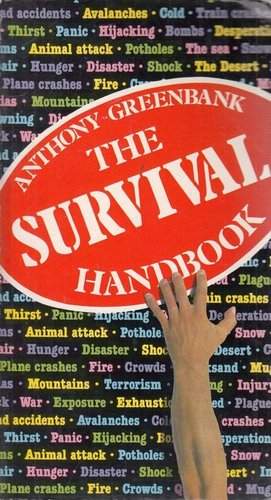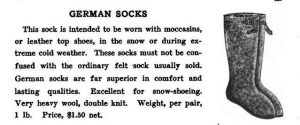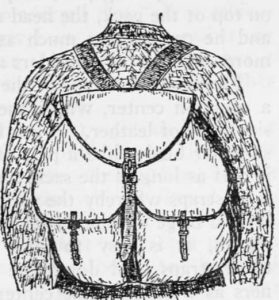My girlfriend was telling me how her sister in Brazil had managed to acquire a piece of land. Living on her own land is something that my girlfriend has often said that she would like to do.
“You will have to teach me survival”, she added.
I admit I was a little surprised by that request. She is an incredibly practical person.
When she was a little girl, she would escape her toxic home environment and live on the beach, catching fish. I suspect there is quite a bit she could teach me.
However, she is a very wise lady, and part of wisdom is knowing what you do not know!
What should I put on her reading list, I pondered?
Camping and Woodcraft (Kephart)
Regular readers of this blog will not be surprised to know this is one of my favourite books. I prize my old 1927 reprint of the 1921 edition. Around 884 pages, yet fits in an M65 jacket pocket.
This book is definitely something I will save, come the apocalypse.
It is rightly called a classic and a title that every outdoorsman should read.
The book is out of copyright, so I have a number of alternate editions in PDF, found for free on-line.
Camping and Woodcraft may have been written over a century ago (1906/1916), but is still a wealth of useful knowledge. It is no bad thing to know how things may be done without Gore-tex and GPS.
The Survival Handbook (Greenbank)
Greenbank's book seldom appears in recommendations for survival libraries. It seems to be relatively unknown.
It is an excellent book and is a must-have in my opinion.
The Survival Handbook is a great book since it includes many possible emergency situations that other manuals neglect.
Packed with useful information and easy to read and navigate. Even readers “not into survival” will find something of worth within its pages.
This book was first published back in 1967, long before the “survival craze” when many manuals were produced. Consequently, there are a few minor points that need updating.
For example: current advice is to remove ticks by gently pulling them with tweezers, rather than the older approaches in this and many other books. 
I would also stress that you should not join different ropes with a reef knot, even with a couple of half-hitches added. Always use the fisherman's knot, as is later recommended by Greenbank. A fisherman's knot is a pair of overhands, so is probably easier to learn and remember than a reinforced reef.
Scorpion claws are not poisonous. Claw size is generally inversely proportional to potency of sting.
I am also dubious as to whether any coat worthy of the name would make a good signalling kite. It seems more prudent to keep your coat on and use your shirt for a use where a garment may be potentially lost.
Of course, no book is perfect and remains perpetuatlly up to date. This is why we should read more than one book on any topic. The more angles you look at something from, the better you will know it.
These very minor points aside, I would wholeheartedly recommend a copy of Greenbanks's Survival Handbook for any survival library.
Usefully, the Survival Handbook is a standard sized paperback, so there is no reason that one could not put it in a ziploc bag and carry it with you in a rucksack pocket.
The SAS Survival Handbook (Wiseman)
For a more “conventional” bushcraft/survival manual, Greenbank's book is nicely complimented by “The SAS Survival Handbook” by John “Lofty” Wiseman. Also available with the alternate title of “The SAS Survival Guide” or “SAS Survival Guide”.
A revised edition was published in 2009.
Probably the only thing wrong with this book is the title. Even way back in 1986 when this book was published, it was already a cliché that nearly every other survival-orientated item was claimed to be either SAS, Special Forces or Green Beret. I will stress that John Wiseman is a verified genuine former member of the SAS, however.
The SAS Survival Handbook is an excellent choice for any survival library. It is easy to read, yet very detailed. Copies may be found at very reasonable prices.
The original book was nearly a foot square (228 x 238 x 22mm). I remember looking at my copy and wishing for an edited-down smaller version more suited to carrying in the field. Someone else obviously felt the same, because a few years later a Collins Gem edition was released. Amazingly, this was pocket-sized yet preserved all of the original content!
My Gem edition has spent several decades in a ziploc bag in a side pocket of my rucksack. It has travelled from Hong Kong to Brazil and up to Iceland. If nothing else, it has served as an educational way to spend my time while waiting for a bus.
Both sizes of SAS Survival Guide include a coloured section illustrating various edible plants. Other Collins Gem titles may also be of interest, such as “Food for Free”.
The SAS Survival Guide/Handbook is another “must-have” for any survival library. In fact, get the large version for your bookshelf and the Gem for your pack.
Between Kephart, Greenbank and Wiseman you now have a pretty sound foundation for your survival library. It does not hurt that your survival library happens to be relatively compact and lightweight.
If you brought the Gem edition of the SAS Guide, all three books should fit in your bug-out bag.
If you buy the titles recommended above, you have acquired a lot of useful information for a relatively modest outlay.
I suggest that at least some of your library is hardcopy, for when the power is out.
How about some free books to supplement these?
US Field Manuals
Many readers will be familiar with “FM 21-76”, the US military survival manual.
On-line copies are freely available from a number of sites, there being no copyright on US field manuals. Many on-line copies lack the appendixes, such as the extensive illustrated appendix of edible plants, for example.
The current version of FM 21-76 has been redesignated FM 3-05.70.
Many of the sites you can download FM21-76/FM 3-05.70 from will have other field manuals on topics of interests such as navigation, hygiene and first aid.
If you want a printed copy of a field manual, these are available from a number of publishers. Price, cover and sometimes title will vary.
While these survival manuals are now described as “all services”, they were originally written as advice for downed aircrews, and this should be remembered when reading certain sections.
US field manuals tend to be clearly written but are not necessarily concise: FM 3-05.70 is 676 pages long.
There is also sometimes a tendency in field manuals for information to become institutionalized. New content may get in, but older, possibly no longer accurate content is slow to be removed.
I cannot do better than the advice Robert DePugh gives: FM 21-76 should be carefully read at home, and then left behind with other items not worth taking along.
The military manuals are not as “easily digestible” as Kephart, Greenbanks or Wiseman. They are, however, “information dense” and provide excellent background and context for the other books, at a price that cannot be beat, free!
The exception to the above statement is AFM 64-5 (1952). This is a compact and very readable work. It has several gems of information that are not often seen in many other works.
If I have one quibble about 64-5, it is that many of the illustrations are remote from the relevant text. Better and additional illustrations of some of the plants described would have been welcome.
If any publisher wishes for a new survival title, an updated version of 64-5 would be worth considering.
I would highly recommend that AFM 64-5 is the first military survival manual you consider reading.
The above recommendations will have given you a pretty comprehensive survival/bushcraft library.
In later blogs, I will review other titles, including those that are more specialized in their field.
You will also need some books on self-defence. For these, scroll down and follow the links.
I am very short of money at the moment, so you custom or donations will be very much appreciated!





















